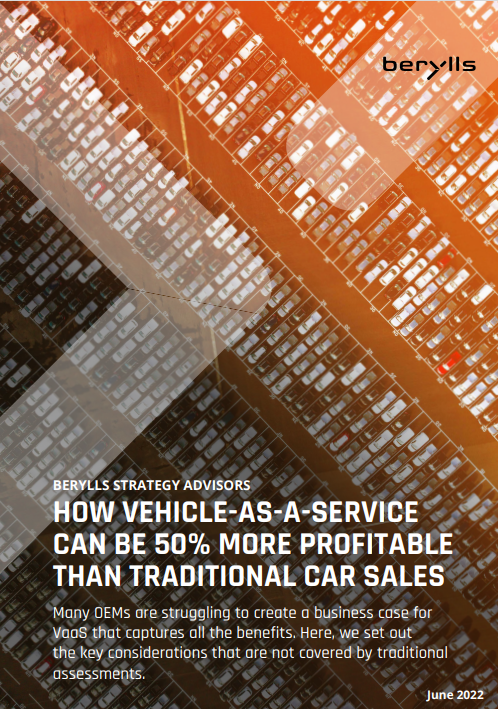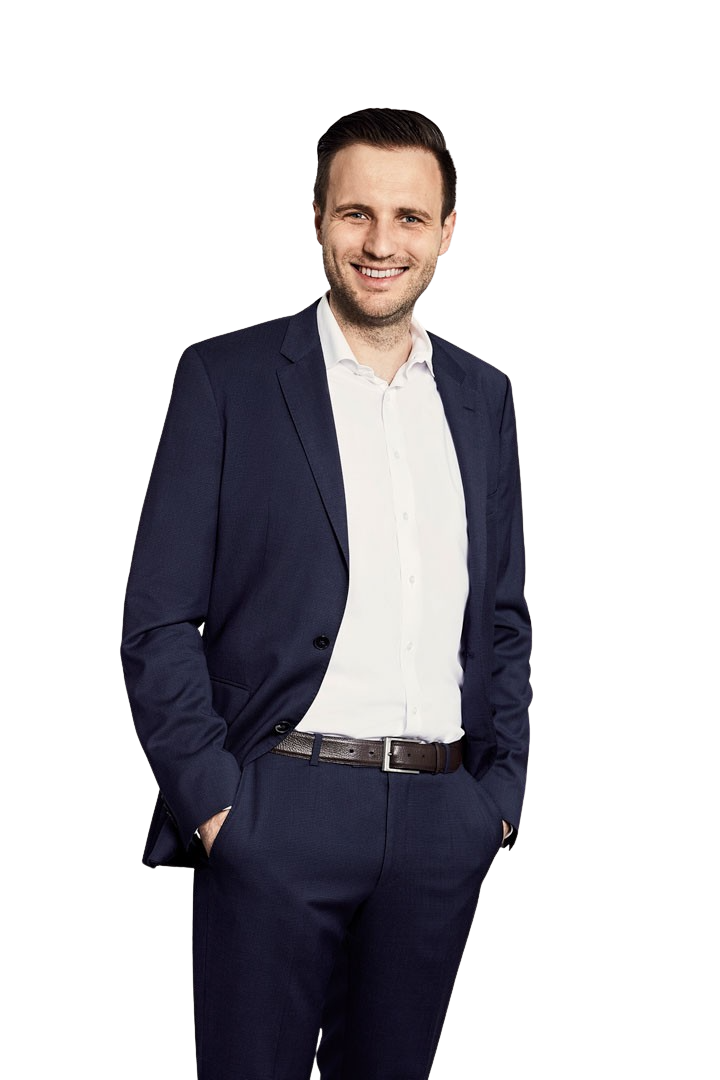any OEMs are struggling to create a business case for VaaS that captures all the benefits. Here, we set out the key considerations that are not covered by traditional assessments.
Customer needs and the resulting demand patterns are changing in the automotive industry. Owning a prestigious car used to be a symbol of status, but vehicle ownership is no longer the aspiration of many drivers. This is the result of rapidly changing customer expectations, and influences inside and outside the automotive world. Three main trends dominate:
These forces present a fundamental challenge for the traditional automotive business, built on one-off sales and after-sales revenue from parts and servicing. Vehicle-as-a-Service (VaaS) models, in which the customer does not own the vehicle anymore and returns it at the end of the contract, are on the rise – based on current customer feedback, we estimate there will be a 38% increase in the market share of use-based models by 2025.
VaaS very much caters to what customers already expect and value from services in other parts of their lives, such as music or video streaming. The good news is, it creates two central opportunities for OEMs and other providers:
Figure 1
In contrast to the traditional ownership model, in which the seller loses access to the customer and the vehicle after the initial sale or financing contract ends, VaaS providers can at least in theory benefit from an ever-increasing customer and vehicle base.
Based on past project experience, we have calculated that long-term profitability can increase by 40 to 50% as a result. In Figure 2 below we show an indicative comparison of product profitability for both sales models. The calculation is based on anonymized data from a volume OEM, taking the average across several of its battery electric SUVs.
As the chart shows, individual VaaS offerings themselves are less profitable than traditional new car sales. However, profits across multiple use cycles add up to create a far higher total vehicle lifetime value (VLV) for the VaaS provider:
Figure 2
In addition to the direct benefits outlined above, the VaaS model also offers important indirect – and frequently overlooked – benefits. Combined, these will strengthen the business case even further.
Indirect benefits include creating loyalty by offering a convenient, appealing service that meets changing customer demands. At a time when the brand or particular vehicle hardware is no longer a reason to buy or to stay with one OEM, loyalty must be built up through outstanding service and a superb customer experience.
Another indirect benefit of multiple, shorter use cycles is the ability to cross- and up-sell more often. A customer might decide after just a couple of months to switch to a contract for a more expensive model, a decision that would have taken a couple of years in the traditional sales model with longer holding periods.
By making targeted offers to customers they already have a contract with, OEMs will also be able to spend less on marketing because they will have a larger pool of “locked in” customers.
The table below looks at the top- and bottom-line benefits of further little-noticed advantages offered by VaaS, focusing on customer relationship management (there are further indirect benefits to VaaS which relate to the operating model, which we will explore in an upcoming article):
To date, many OEMs are struggling to create a positive business case for VaaS. From the outset, their analysis fails to recognize the 40 to 50% direct profit increase that VaaS can deliver across multiple use cycles (as this profit is usually booked separately across different departments). Further, they do not consider the indirect benefits of the VaaS business model. In this blog we have focused on the customer-related benefits, but there are even greater positive effects if one also considers operating model improvements. These include synergies from increased asset utilization if one common fleet was used for various VaaS offerings in parallel.
For many providers, in particular incumbent OEMs that are looking to expand their traditional, ownership-centered sales offerings to include VaaS, it’s difficult to fully assess even the direct impact factors in their business case. This is because in many companies, the product development process is still siloed, with every department seeking to optimize its own profitability rather than take a cross-functional approach to designing a new service model.
As a result, there is a risk that many potentially successful VaaS offerings will not be launched, because the underlying business case failed to show their true potential. This represents a missed opportunity for providers, as Vehicle-as-a-Service offers are here to stay. Without a VaaS product, OEMs and other potential providers are missing out on securing their customer base in this emerging market.
Today, this may mean losing only a little market share, but in the near future, it means missing out on addressing entire customer groups because they don’t have the right offers: our Vehicle-as-a-Service study showed that by 2025, 50% of Gen Z drivers would use VaaS to buy their next electric car.
If you would like to discuss your own VaaS business case calculations or your strategy and product design, please get in touch:

Florian Tauschek has 8 years of experience in strategy consulting. He focuses on business & sales model strategies for flexible Vehicle-as-a-Service (VaaS) offers.
He is an expert in topics such as customer & vehicle lifetime value optimization, the transformation of the underlying automotive sales model from one-time asset sales towards multicycle models generating recurring revenues as well as market entry strategies for various VaaS products such as operating lease or subscriptions. Furthermore he is the author of several market leading studies around VaaS.
He holds a Master of Science degree in management from HHL – Leipzig Graduate School of Management.

Christopher Ley joined Berylls by AlixPartners (formerly Berylls Strategy Advisors) in October 2021 as Partner. He has over 14 years of top management consulting experience with focus on new business models and market expansions within the automotive & mobility industry. He is an expert around Vehicle-as-a-Service, comprising vehicle finance & leasing, fleet management and mobility services. Christopher Ley is advising OEMs, Captives, Financial Services Companies, PE & VC Investors, Leasing & Rental Companies, Fleet Managers and Mobility Startups around the transformation from one-time sales towards use-based multi-cycle business models on a global level.
Prior to joining Berylls, Christopher Ley has been working for other international management consulting firms, amongst others Monitor Deloitte and Alvarez & Marsal. He holds a diploma degree in business administration from Johannes Gutenberg-Universität in Mainz and an MBA from Colorado State University.
